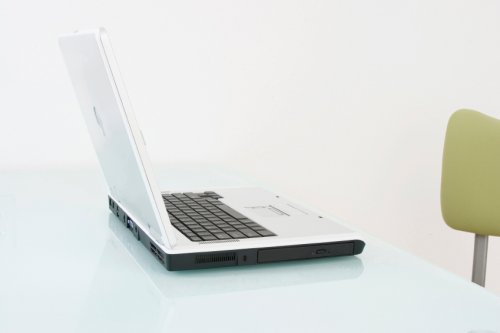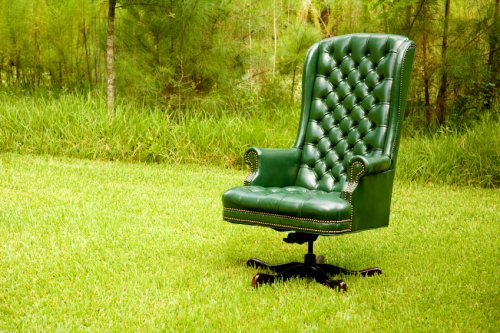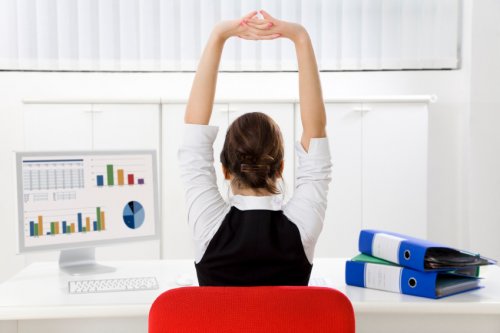Creating Productive Workspaces
This article is a reprint of Wise Bread's contribution to OPEN Forum from American Express -- where small business owners can get advice from experts and share tips with each other.
I spent most of my professional life as a freelancer, working from virtually anywhere: at coffee shops, libraries, bars, porches, the outdoors, and my home office. If the place had WiFi, I found a way to work there.
The exploration of different "working environments" has always been a fascination of mine, and along the way I've picked up some best practices that small business owners can incorporate into their own working environments:
1. Add Plants
Plants are a cheap, easy way to improve your work area tremendously. Plants provide ambiance and texture, adding another dimension to your office.
Aside from adding an aesthetic element, plants also create fresh air and eliminate toxins created by synthetic materials. NASA performed a study and found the plants that removed the most toxins and improved air quality, and there's a fantastic book by B.C. Wolverton called How to Grow Fresh Air that outlines the 50 best houseplants for clean air. They're ranked in terms of how many toxins they remove and ease of upkeep.

2. Declare War on Clutter
Clutter is one of the biggest distractions we can have in the workplace. A clean workspace helps create a clear mind. Clutter keeps you from instantly starting whatever you need to work on. Often we let clutter accumulate because we don't want to deal with it, but ultimately it ends up getting in our way (and more) the next time we want to get something done.
For the modern workplace, a big source of clutter is often computer cables. Stacks of papers, sticky notes posted everywhere, piles of books, cups, and other pieces of clutter each tug a little bit at our mental psyche.
There's nothing more satisfying than a clean workspace, ready for action. If you're looking for more inspiration, check out the Unclutterer Workspaces Flickr stream.

3. Buy a Good Chair
I used to think that any chair would do when it came to a home office and could never justify buying an expensive office chair. However, you don't know what you're missing until you have a comfy, ergonomic office chair. For many modern workers, the chair is where you spend the majority of your day.
Aeron makes probably the most popular ergonomic office chair, but there are plenty of other excellent options if you do some searching. While it can be hard for a cash-strapped small business to justify spending over a thousand dollars on an office chair, it's worth every penny.

4. Add a Door
If you don't have one already, you'll need an office with a door. It's hard to be fully engaged with work with all the distractions that happen in a shared workspace.
If having a door isn't an option, invest in a pair of noise-canceling headphones. They'll cancel out most of the distracting workplace chatter.

5. Encourage Activity and Breaks
Breaks are absolutely crucial to our health. If you sit in a chair all day without exercising, you're only asking for health problems in the future. Finding ways to exercise in small increments throughout the day keeps you refreshed and focused, allowing you to produce higher-quality work.
In the book The Way We're Working Isn't Working, author Tony Schwartz states his belief that the best work sessions last no longer than 90 minutes at a time, followed by periods of rest.
Aside from the health benefits, breaks also give us a chance to let our mind work on problems subconsciously. Often our best ideas come at the most unexpected times, like when we're mowing the lawn or doing the dishes. Our mind loves to work on problems at the subconscious level, and adding more breaks in your workday allows your mind to process tough problems.

6. Create a "Chill" Area
It's one thing to schedule breaks, but during those breaks it helps to actually get up and out of your work environment. Adding a comfy corner in the office gives you a space that's not meant for work and allows you to physically detach from your workspace.

7. Pay Attention to Ergonomics
Most of us have bad posture while we're working. Ergonomics helps us find the right workplace equipment that fits the needs of our bodies, keeping us from injury. Proper desk heights, posture, and exercises are important to ensuring that we're working healthy over the long haul.
Take it from someone who didn't pay attention and paid for it dearly with carpal tunnel: Ergonomics are important. Ergotron has a helpful ergonomics workplace planner to help you get started.

What are your tips for a more productive workspace?
Disclaimer: The links and mentions on this site may be affiliate links. But they do not affect the actual opinions and recommendations of the authors.
Wise Bread is a participant in the Amazon Services LLC Associates Program, an affiliate advertising program designed to provide a means for sites to earn advertising fees by advertising and linking to amazon.com.














I'd never thought of adding a "chill area" to my workspace but it sounds as if it would be a good idea!
I've found that keeping it simple is key! Keep your inbox empty of pending tasks, and your stress level will decrease while your productivity increases. Its amazing what the simple changes can do!
-Pat
http://compoundingreturns.blogspot.com
Standing while working? I'm not sure but several others are doing it. These are people making creative stuffs online. Gina Trapani of Lifehacker recently published an article on it.